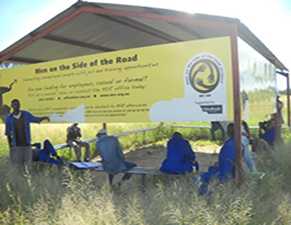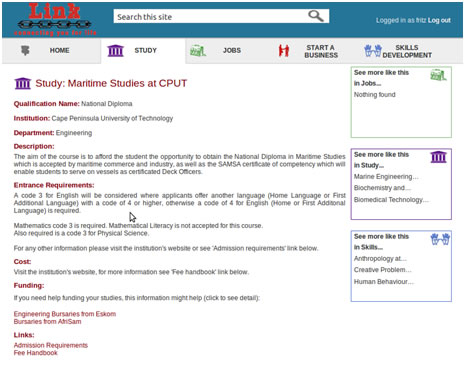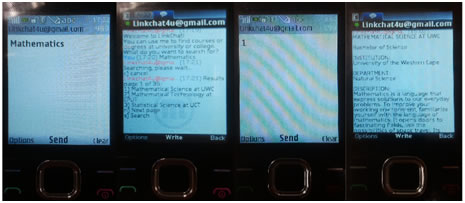
Using Mobile Devices as a Platform in Job Seeking It has become a truism that mobile phones ought to be the computing platform of choice in developing countries. Unfortunately the high cost of voice calls and text messages (SMS) prevent the widespread adoption in heavily regulated countries such as South Africa whose policies favour the establishment of monopolies (see Mobile Phone Operators Considered Harmful). Our research in using the mobile devices as a platform has addressed job seeking. |
||
Chris Chepken Software design for informal setups: Centring the benefits |
Telecommuting and Day-Labourers |
|
 |
Many researchers have focused on ICT's innovations targeting the poor. Among the poor are the low-skilled day-labourers who belong to the Day-Labour Market (DLM), which is also made up of employers, job-brokers and intermediary-organisations. The DLM's main activities involve a great deal of travelling in search of jobs by workers and a search for workers by employers. The travels place a heavy economic pressure on the day-labourers reducing their net earnings while they struggle with extreme poverty. The first objective of our study was to find out how and which ICT interventions can be used to alleviate the challenges faced by the DLM stakeholders. The nature of our problem resembled studies using ICT's to reduce travel distance. Such studies fall under subjects such as teleactivities and teleworking/ telecommuting and advocate for prospects of working anywhere anytime, and has not received much research attention in the developing world. They have mainly been done in the developed world and mostly on white-collar workers and organizations. This brought about our second objective: to find out whether the ICT interventions for the DLM could be studied under teleworking/telecommuting and whether the telecommuting benefits can be realized for the blue-collar workers. The research outcomes were divided into three categories:
|
|
 |
||
Fritz Meissner Consequences of software design decisions for low-income communities: A case study |
Adoption Characteristics of Mobile and Web Technologies for Information Dissemination to Low-Income Urban Youth |
|
| This is a comparative study of mobile and conventional web technologies applied to the problem of providing access to career guidance information to high school students from marginalized communities. We worked in collaboration with an NGO programme called Link. Reported high availability of mobile technology amongst these users would be beneficial, but our NGO partner questioned feature phones’ applicability for consuming large quantities of information. We designed two systems: a text interface exposed through a mobile instant messaging service embodied our understanding of the best way to target the mobile landscape, and a website targeted conventional computers. System logging over eight months of parallel deployment showed convincing advantage for the mobile system in the level of engagement from students. Qualitative feedback helped us to discover that a range of contextual factors caused this advantage: the technologies were affected by setting, software in operation, users’ capacity for operation, their personal resources and surrounding persons’ resources. | ||
 |
 |
|